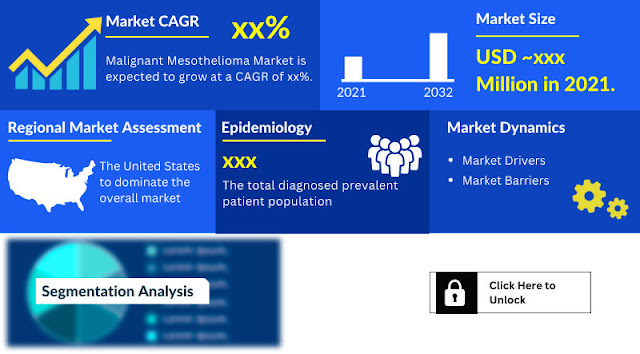Emerging Landscape of Anti-Neutrophil Cytoplasmic Antibody-Associated Vasculitis Market
About Anti-Neutrophil Cytoplasmic Antibody-Associated Vasculitis Market
Anti-Neutrophil Cytoplasmic Antibody-Associated Vasculitis
(ANCA-associated vasculitis) is a rare autoimmune disease characterized by
inflammation of blood vessels. The condition affects multiple organ systems and
can lead to significant morbidity and mortality if left untreated. Over the
years, the market for ANCA-associated vasculitis has witnessed notable
developments in terms of diagnostic techniques, therapeutic options, and
patient care. This article aims to explore the current state and future
prospects of the ANCA-associated vasculitis market.
Prevalence and Diagnosis: ANCA-associated vasculitis is
relatively rare, affecting approximately 10 to 20 individuals per million
worldwide. The condition primarily occurs in adults, with a higher prevalence
in individuals aged 40-60 years. Prompt and accurate diagnosis is crucial for
effective management. Diagnostic techniques such as ANCA testing, imaging
studies, and biopsy play a vital role in confirming the presence of vasculitis
and determining its severity.
Anti-Neutrophil Cytoplasmic Antibody-Associated Vasculitis Market Therapeutic Landscape: The treatment of ANCA-associated vasculitis typically
involves a combination of immunosuppressive medications and glucocorticoids. In
recent years, the introduction of novel therapies has revolutionized the
management of this condition. Rituximab, a monoclonal antibody targeting B
cells, has shown promising results in inducing remission and reducing relapse
rates. Other immunosuppressive agents, such as cyclophosphamide and
azathioprine, continue to be used, although their side effects and long-term
toxicities pose challenges.
Anti-Neutrophil Cytoplasmic Antibody-Associated Vasculitis Emerging
Therapies: The ANCA-associated vasculitis market is witnessing an influx of
innovative therapies that target specific components of the immune system.
Belimumab, an anti-B-lymphocyte stimulator, has shown potential in reducing
disease activity and preserving renal function. Additionally, avacopan, a
selective complement 5a receptor inhibitor, has demonstrated efficacy in
reducing disease activity and glucocorticoid requirements while maintaining
patient safety.
Improved Patient Care and Awareness: Advancements in the
understanding of ANCA-associated vasculitis have led to improved patient care.
Multidisciplinary approaches involving rheumatologists, nephrologists, and
pulmonologists have enhanced the management of this complex disease. Moreover,
patient support groups and advocacy organizations have played a vital role in
raising awareness, facilitating early diagnosis, and providing resources for
patients and their families.
Anti-Neutrophil Cytoplasmic Antibody-Associated Vasculitis Market Challenges and Opportunities: Despite significant progress, challenges
persist in the ANCA-associated vasculitis market. Limited awareness among
healthcare professionals and the general public often leads to delayed
diagnosis and treatment initiation. High treatment costs and the potential for
adverse effects hinder access to optimal therapies. However, the evolving
landscape presents opportunities for further research, including the
exploration of targeted therapies, predictive biomarkers, and personalized
medicine approaches.
About Axillary Hyperhidrosis Market
Axillary hyperhidrosis, commonly known as excessive underarm
sweating, is a medical condition that affects millions of individuals
worldwide. This condition can significantly impact a person's quality of life,
leading to discomfort, embarrassment, and social anxiety. In recent years,
there has been a significant rise in the demand for effective treatments and
solutions to address axillary hyperhidrosis. As a result, the axillary
hyperhidrosis market has witnessed remarkable growth, with innovative products and
therapies revolutionizing the way individuals manage this condition.
Market Overview: The global axillary hyperhidrosis market solutions has experienced substantial growth due to various
factors, including increased awareness, advancements in medical technology, and
rising disposable income. Market research indicates that the prevalence of
axillary hyperhidrosis is higher among young adults, which has contributed to
the expanding target consumer base for market players.
Treatment Options: Traditionally, individuals with axillary
hyperhidrosis relied on antiperspirants, which provided only temporary relief.
However, in recent years, novel treatment options have emerged, offering more
effective and long-lasting solutions. Some of the most prominent treatment
options for axillary hyperhidrosis include:
- Topical
Antiperspirants: The axillary hyperhidrosis market offers a range of advanced antiperspirant
formulations specifically designed to combat excessive underarm sweating.
These products typically contain aluminum chloride, which helps reduce
sweat production.
- Botulinum
Toxin Injections: Botulinum toxin injections, such as Botox, have gained
popularity as a safe and effective treatment for axillary hyperhidrosis.
By temporarily blocking the nerve signals that stimulate sweat glands,
these injections provide relief for several months.
- Oral
Medications: Certain oral medications, such as anticholinergics, can be
prescribed to individuals with severe axillary hyperhidrosis. These
medications work by blocking the chemical signals that trigger excessive
sweating.
- Iontophoresis:
This non-invasive procedure involves passing a mild electric current
through water-soaked skin, effectively reducing sweat production.
Iontophoresis devices are now available for home use, making this
treatment more accessible to individuals.
- Surgical
Interventions: In severe cases where other treatments have proven
ineffective, surgical interventions like sweat gland removal or
sympathectomy may be considered. These procedures are typically reserved
as a last resort due to their invasive nature.
Market Trends and
Future Prospects: The axillary hyperhidrosis market is witnessing several
notable trends that are shaping its future trajectory:
- Technological
Advancements: The market is witnessing continuous advancements in medical
technology, leading to the development of more efficient and precise
treatment options. For instance, laser therapy and microwave thermolysis
are emerging as potential alternatives for axillary hyperhidrosis
treatment.
- Increased
R&D Investment: Major players in the pharmaceutical and medical device
industries are investing significant resources in research and development
to introduce innovative solutions for axillary hyperhidrosis. This
investment aims to enhance treatment outcomes, minimize side effects, and
improve patient convenience.
- Growing
Awareness and Acceptance: The growing awareness about axillary
hyperhidrosis and its impact on individuals' lives is contributing to
increased acceptance and understanding of this condition. This, in turn,
is driving the demand for effective treatment options and promoting early
intervention.
- Expansion
of Distribution Channels: The market is witnessing the expansion of
distribution channels, including online platforms, to make axillary
hyperhidrosis solutions more accessible to individuals worldwide. This
allows consumers to conveniently explore and purchase a wide range of
products and treatment options.




Comments
Post a Comment